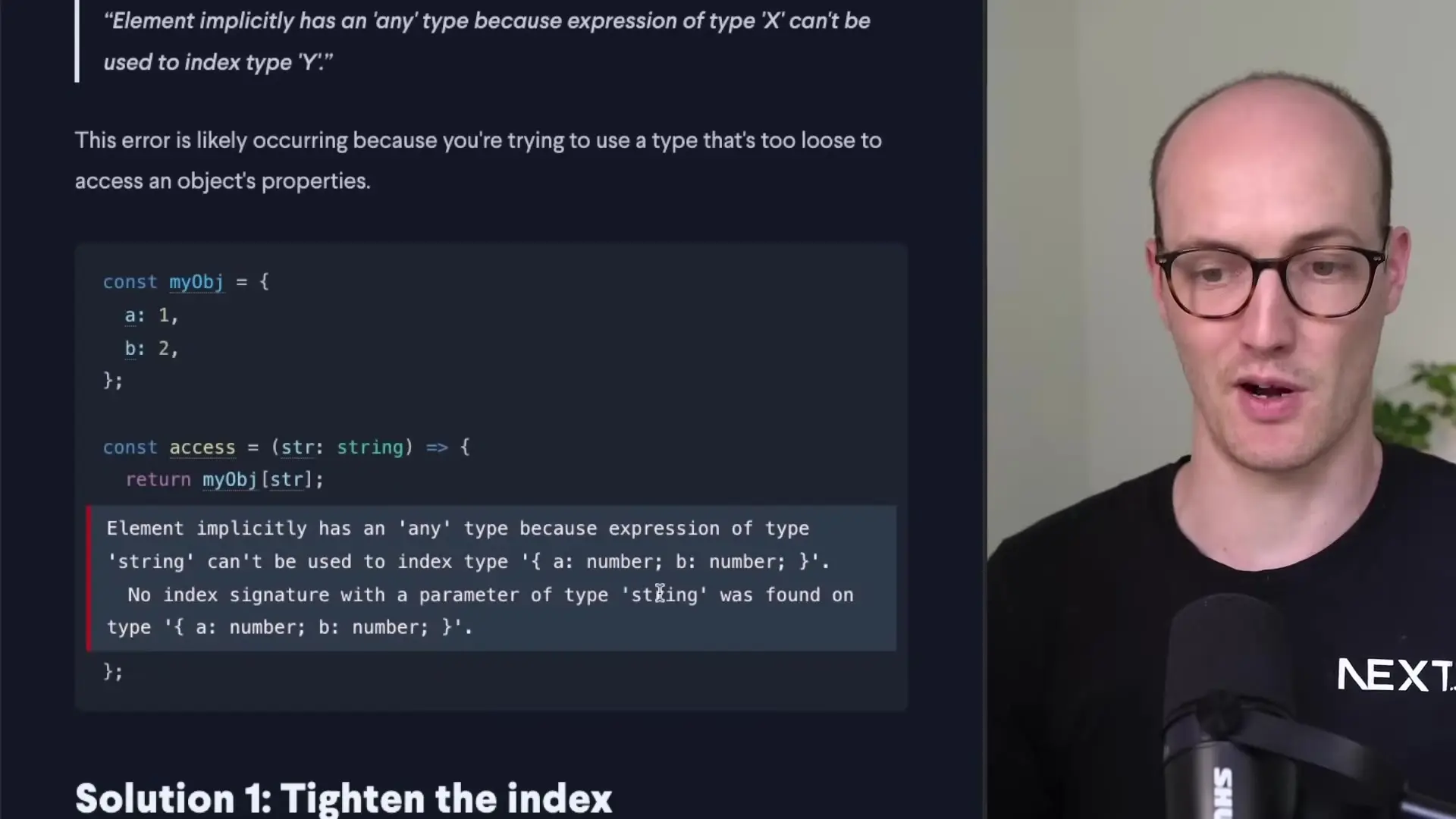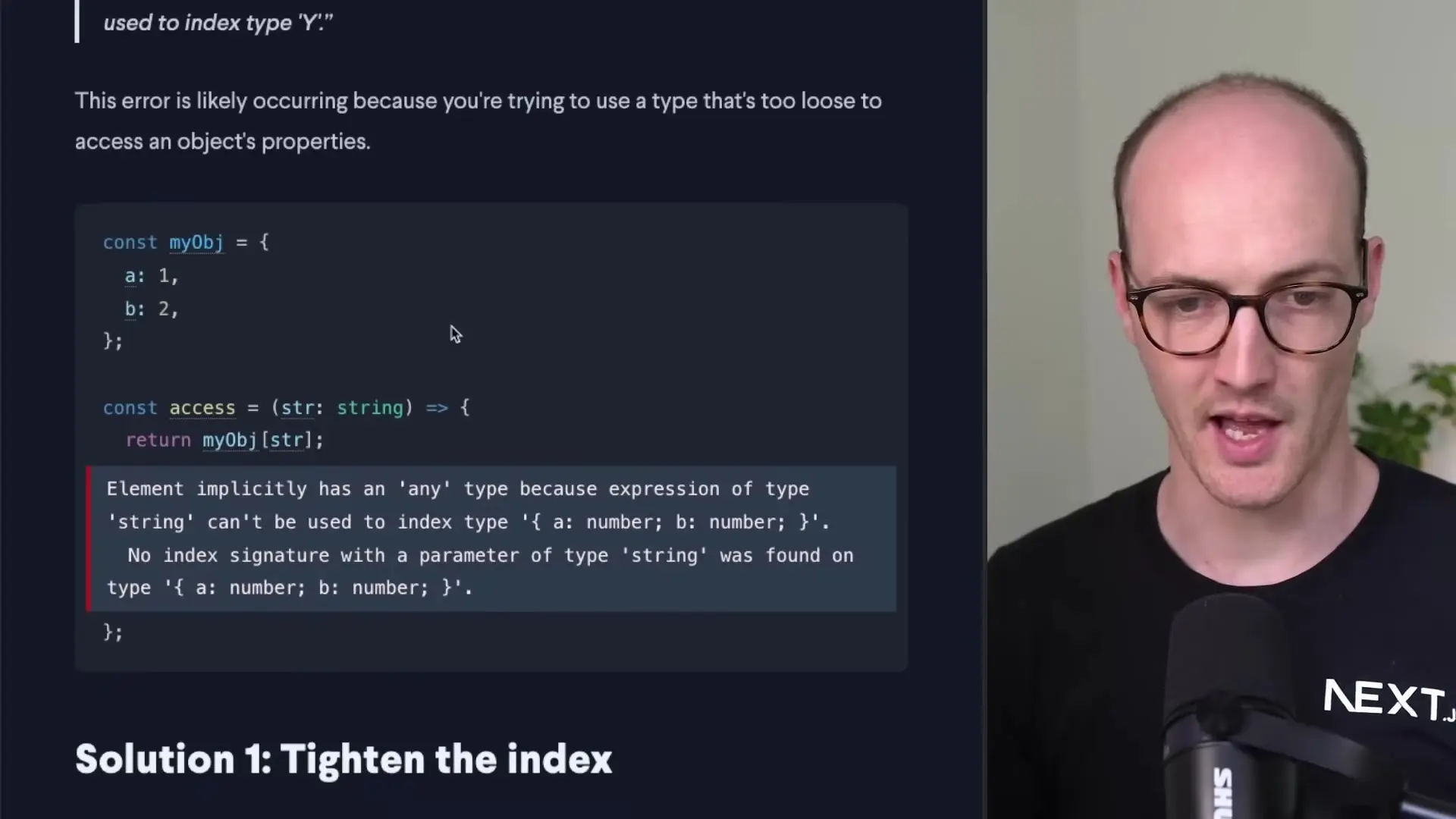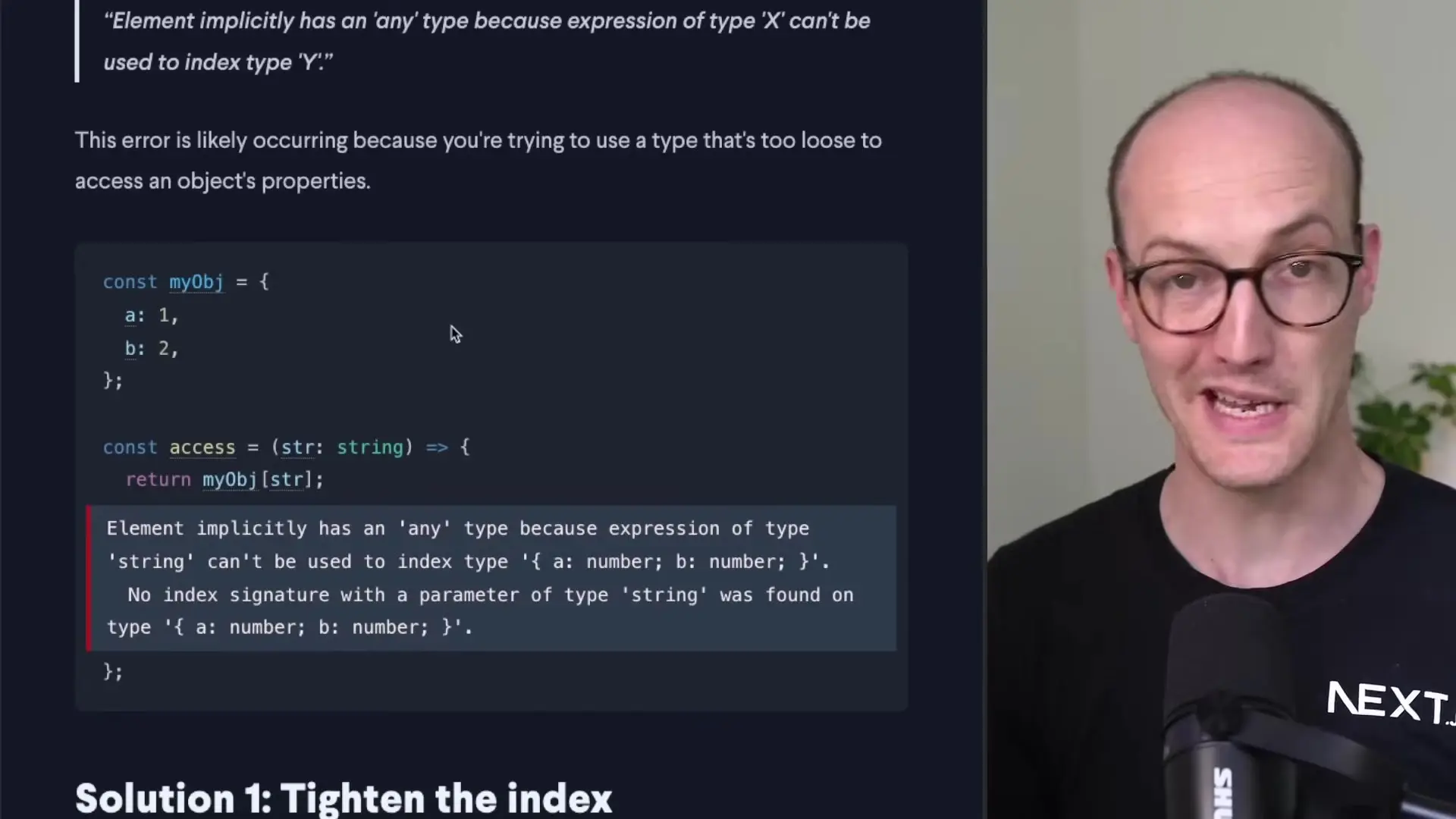
Working with dynamic objects in TypeScript often presents unique challenges that can leave developers scratching their heads. If you've ever encountered the dreaded error message about "no index signature with a parameter of type string" when trying to access object properties dynamically, you're not alone. In this article, we'll explore three practical techniques for getting dynamic implementation to work effectively in TypeScript.
Understanding the Problem with Dynamic Object Access
Before diving into solutions, let's understand the core issue. When you have a typed object in TypeScript and attempt to access it using a string variable, you'll typically encounter an error like this:

This happens because TypeScript is protecting you from potentially accessing properties that don't exist on your object. When you define an object with specific properties (like 'a' and 'b' in our example), TypeScript doesn't automatically allow you to access it with arbitrary strings, as this could lead to runtime errors.
// This is our typed object
const myObject = {
a: 1,
b: 2
};
// This causes the TypeScript error
function access(key: string) {
return myObject[key]; // Error: No index signature with a parameter of type 'string' was found
}Solution 1: Tighten the Index Type with keyof typeof
The first approach to handling dynamic objects is to restrict the keys that can be used to access the object. By using the `keyof typeof` operator, we can ensure that only valid keys of the object are used.
const myObject = {
a: 1,
b: 2
};
// Solution 1: Restrict the key to only valid keys of the object
function access<T extends keyof typeof myObject>(key: T) {
return myObject[key]; // Works! Returns number
}
// This works
const aValue = access('a');
// This would cause a compile-time error
// const cValue = access('c'); // Error: Argument of type 'c' is not assignable to parameter of type 'a' | 'b'This approach is type-safe and prevents you from accessing properties that don't exist on the object. It's ideal when you know all possible keys at compile time and want to ensure that only valid keys are used for dynamic object access.
Solution 2: Loosen the Object Type with Record
Sometimes you need more flexibility and want to allow accessing properties that might not be defined at compile time. In such cases, you can loosen the object type using the `Record` utility type.
// Solution 2: Loosen the object type
const myObject: Record<string, number> = {
a: 1,
b: 2
};
function access(key: string) {
return myObject[key]; // Works! Returns number | undefined
}
// These all work
const aValue = access('a'); // 1
const bValue = access('b'); // 2
const cValue = access('c'); // undefinedWith this approach, you're telling TypeScript that your object can have any string key with number values. This gives you the flexibility to access any property, but you should be aware that accessing non-existent properties will return `undefined`. To handle this safely, you should enable the `noUncheckedIndexAccess` compiler option, which will make TypeScript correctly type the return value as `number | undefined`.
Solution 3: Cast the Index for Maximum Flexibility
The third approach involves casting the index to the expected key type. This gives you maximum flexibility but comes with the least type safety.
const myObject = {
a: 1,
b: 2
};
// Solution 3: Cast the index
function access(key: string) {
return myObject[key as keyof typeof myObject]; // Works but potentially unsafe
}
// These all compile, but be careful!
const aValue = access('a'); // 1
const bValue = access('b'); // 2
const cValue = access('c'); // undefined, but TypeScript thinks it's a number!
This approach essentially tells TypeScript to trust that your string is a valid key of the object. While this gives you maximum flexibility for dynamic object modeling, it's also the least safe option. You're essentially overriding TypeScript's type checking, which could lead to runtime errors if you're not careful.
Choosing the Right Approach for Your Use Case
When implementing dynamic objects in TypeScript, the approach you choose should depend on your specific requirements:
- **Solution 1 (keyof typeof)**: Choose this when you need type safety and want to ensure only valid keys are used. This is ideal for scenarios where all possible keys are known at compile time.
- **Solution 2 (Record)**: Use this when you need flexibility to add new properties dynamically or when working with objects whose structure isn't fully known at compile time.
- **Solution 3 (Type Casting)**: Reserve this for special cases where you need maximum flexibility and understand the potential risks. Always add appropriate runtime checks when using this approach.
Best Practices for Dynamic Object Implementation
- Enable the `noUncheckedIndexAccess` compiler option to get more accurate type information when accessing object properties dynamically.
- Add runtime checks when accessing properties that might not exist, especially when using the type casting approach.
- Consider using TypeScript's utility types like `Partial
`, `Pick `, and `Omit ` for more sophisticated dynamic object manipulations. - Document your approach clearly, especially when using type assertions, so other developers understand the potential risks.

Conclusion: Mastering Dynamic Object Handling in TypeScript
Getting dynamic implementation to work in TypeScript doesn't have to be difficult. By understanding these three approaches—tightening the index type, loosening the object type, or casting the index—you can handle dynamic objects effectively while maintaining an appropriate level of type safety for your specific use case.
Remember that TypeScript's type system is designed to help you catch errors at compile time, so whenever possible, lean towards the more type-safe approaches. However, when you need the flexibility of dynamic object access, TypeScript provides the tools you need to make it work while still benefiting from its powerful type system.
By mastering these techniques for dynamic object modeling, you'll be well-equipped to handle a wide range of scenarios in your TypeScript projects, from strictly typed applications to those requiring more dynamic behavior.
Let's Watch!
3 Proven Techniques for Handling Dynamic Objects in TypeScript
Ready to enhance your neural network?
Access our quantum knowledge cores and upgrade your programming abilities.
Initialize Training Sequence